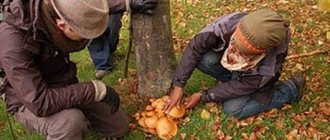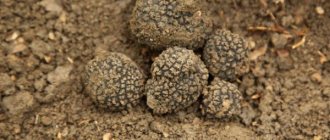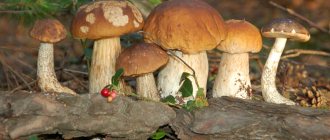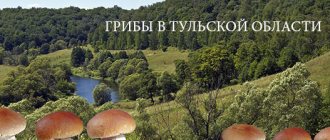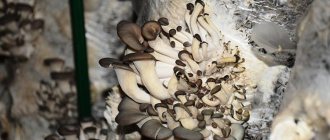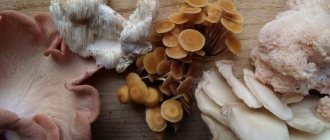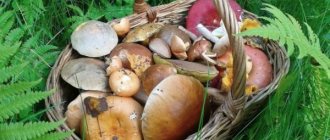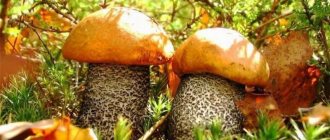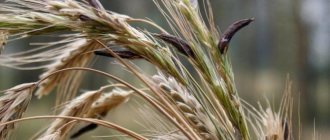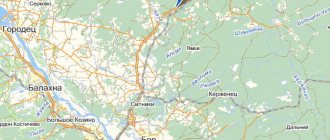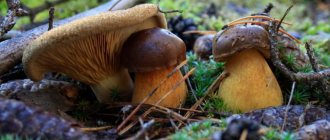October is the last month when you can still have time to go mushroom picking. And today we will tell you where to go for mushrooms, following the example of the stars of domestic show business.
Subscribe and read Express Newspaper in:
For some, picking mushrooms is just a way to brighten up their leisure time, for others it is a real sport. Whatever category you belong to, it is more pleasant to pick mushrooms in places where they are abundant. We have compiled a “star” mushroom map for you and will tell you where to go for mushrooms.
How to identify a mushroom place in the forest
There are several ways to determine, with a high degree of probability, the most likely mushroom spots:
- in the process of searching for mushrooms, you should very carefully and thoroughly inspect the area, since a sure sign of a place where edible varieties bear fruit is the presence of a clearing;
- a large number of boletuses are usually found on damp and cool autumn days in mossy areas along forest paths;
- many edible varieties prefer well-lit forest edges and low grass;
- fruiting bodies grow quite rarely in the depths of the forest thicket and in tall grass, where there is a lack of light and heat;
- if a thick morning fog appears over the forest, then such a natural phenomenon most often becomes a sure sign of the onset of a period of abundant fruiting of chanterelles, saffron milk caps and boletus mushrooms;
- It is recommended to look for the fruiting bodies of butterflies in pine plantings and spruce forests, as well as in light clearings that are not too overgrown with moss;
Black breast
It is also nigella (in some regions, including here in the Urals, it is called “ pig ”, although this is not entirely true, because this alternative name belongs to and is more suitable for other mushrooms - pigs). It differs from real milk mushrooms in its darker, olive color and increased acidity of the pulp, but in terms of taste it is not particularly inferior to it (with proper preparation, respectively). However, in some areas, a certain part of mushroom pickers ignore nigella. And in vain, because the caustic juice of this mushroom is perfectly neutralized by boiling or soaking. In addition, pig meat is very rich in vitamins and proteins.
Just like the real one, the black milk mushroom forms mycorrhiza with birch, which means it is also found in birch forests and mixed forests, preferring the brightest places like clearings, clearings - where there is moss, leaf litter or grass. Loves to grow along the edges of clearings and along the sides of forest roads. The fruiting time of nigella practically coincides with those of real milk mushrooms - from July to September .
Where and how to look for mushrooms (video)
- a rich harvest of oyster mushrooms can be collected on deciduous trees, especially on relatively young aspens and lindens, as well as birches;
- Greenfinch forms fruiting bodies, as a rule, in old pine plantings with abundant pine litter;
- in fairly rainy summers or humid autumns, edible varieties of mushrooms grow abundantly in clearings, hills and other hills where there is minimal humidity;
- in summers that are too dry and autumns that are not wet enough, edible varieties produce fruiting bodies en masse in areas where moisture remains, including areas around small natural bodies of water;
- some varieties prefer weak grass cover and fairly dense forest soils.
A significant number of edible varieties are capable of forming fruiting bodies on the top of slopes and near watersheds. Experienced mushroom pickers prefer to mark the most productive areas in terms of the formation of fruiting bodies on the map, which allows them to annually obtain abundant harvests of the most valuable types of mushrooms.
In fairly rainy summers or humid autumns, edible varieties of mushrooms grow abundantly in glades, hills and other hills
The most common types
Where do these gifts of the forest grow? The most common type is the true milk mushroom, which can be found in the European part of Russia, Western Siberia and the Far East. And throughout the Urals. Other types of milk mushrooms are found in the north because they love cool weather. Milk mushrooms have been well studied; there are about 20 species of these representatives of the mushroom kingdom. The most common are black, yellow, violin, pepper and aspen milk mushrooms, wave and diaper white and real milk mushrooms. When to collect, what species, where they grow - for this information you can refer to the mushroom picker’s calendar, because milk mushrooms can be edible and conditionally edible.
The most mushroom places in Russia
On the map you can find a huge number of the most mushroom places located in many regions of our country. All of them are located in different climatic zones:
- Altai Territory - the most valuable mushrooms in the Volchikha region, near Malyshevo Log, Larichikha, Shipitsino and Ozerki;
- Blagoveshchensky district - Ignatievskoe highway, Ignatevo village, Novotroitskoe highway, Belogorye, Markovo, Peschanka lake, Yegoryevka and Novopetrovka, Pryadchino village;
- Bryansk region - Domashovo village, Kokino village, Chichkovo, Klyukovniki, Altukhovo and Kaligaevka platforms, Zemlyanichnoye and Kokorevka stations, pl. 480 km, Edaziya and Rzhanitsa, as well as pl. 162 km;
- Buryatia - Verkhne-Taletskoe, Elavenskoe, Kurumkanskoe and Romanovskoe, as well as Selenginskoe;
- Vladimir region - Vyaznikovsky, Gorokhovetsky, Melenkovsky, Muromsky, Selivanovsky and Sudogodsky districts;
- Yekaterinburg – Lake Alaki, near Schelkun and the Khrustalnaya base;
- Irkutsk region - Glubokaya Pad, Egorovschina, Maysk, the village of Gorokhovo, the village of Steklyanka, Olkhon, Bilchir, Novaya Uda, Tunkinskaya Valley and Arshan, as well as Olonki, Galki, Ryazanshchina and Listvyanka;
Also read: Mushrooms of Belarus: edible, poisonous and spring species
A rich harvest of oyster mushrooms can be collected on deciduous trees, especially on relatively young aspens and lindens, as well as birch trees
- Kemerovo - the villages of Osinovka, Maksimovo, Ivanovka, Berezovka, Zmeinka, Zarubino, as well as Voskresenka, Chusovitino, Lebedi and Karbelkino, the coastal zone of Ters;
- Kostroma region - Ulyanovo, Vasilevo, Sentsovo, Baksheyka and Petrilovo;
- Krasnoyarsk Territory - the settlements of Arey, Pogorelka, Minderla, Emelyanovo, Yelovaya, Yasnaya Polyana, Elita, Minino, Udachny, Zykovo, Lukino, Nikolskoye, as well as Bartat;
- Crimea - Crimean Mountains, the area of Mount Demerdzhi, Bakhchisarai and Sevastopol, the Sasyk and Donuzlav estuaries, as well as Zelenogorsk and Stroganovka;
- Leningrad region - New Devyatkino, Berngardovka, Semrino, Pukholovo, Nurma, Sinyavino, Sosnovo, Zerkalnoe lake, Kipuya and Kobona;
- Murmansk region - 28 and 65 km of the Pechenga road, 41 and 42 km of the Serebryanskaya road and 41 km of the Leningrad road;
- Primorsky Territory - Varyag, Sedank, Sputnik, Sadgorod, Okeanskaya, Tikhaya Bay area, near the Botanical Garden and in the forest area on Shamora;
Who should not eat milk mushrooms - harm
Milk milk contains a large amount of fiber and if you have stomach problems (ulcers, gastritis), they can be harmful. For diseases of the gallbladder, liver, and pancreas, these mushrooms are contraindicated.
Milk mushrooms are difficult to digest and are considered high in calories. They need to be consumed in the first half of the day so that they have time to digest. Frequent consumption of mushrooms can lead to allergic reactions.
Children under 7 years of age and pregnant women are contraindicated to consume these mushrooms, as they can be harmful.
Improper preparation of mushrooms can lead to poisoning and botulism.
It is impossible to collect milk mushrooms near roads and industrial zones, as they accumulate harmful substances. It is dangerous to eat such mushrooms.
How to find mushroom spots (video)
- Samara - the village of Shiryaevo, Sergievsky, Bogatovsky, Borsky and Shigonsky districts, the villages of Mekhzavod, Upravlencheskiy and Kurumoch, as well as the village of Novosemeikino;
- Saratov region - Saratov, Baltaysky, Bazarno-Karabulaksky, Krasnoarmeysky, Marksovsky, Tatishchevsky and Petrovsky districts;
- Smolensk region - Gusino, Nikitino, Lukashevo, Poluyanovo, Sikachi, Verkhovye, Panfilovo, Pleshivtsevo, Byvalka, Fedorovka, Mutishchi, Obolonye, Efremovo, Ripshevo and Pleshcheyevo, as well as Khokhlovka;
- Ulyanovsk region - Sabakaevo, Lebyazhye, Ryazanovo, Bolshoy Cheremshan, Korovino, Andreevka, the Bely Yar sanatorium, Okhotnichya station, the village of Ivanovka and Lomy, Algashi, Chirikovo, Skripino, Skugareevka, Podkurovka, Tumkino, Mikhailovo, Tagai, Abramovka, Sosnovka and Aksakovo;
- Yaroslavl region - Nekouz and Rybinsk, Markhachevo and Shestikhino, Meshkovo and Afanasyevo, Larino, Gavrilov-Yam and Kotovo.
On the territory of the Volgograd region, abundant fruiting is observed in the direction of the Don and near the Tsimlyansk reservoir.
In the Moscow region, experienced mushroom pickers recommend going for “noble” mushrooms to “Sushkinskaya”, “Petelino”, “Chastsovskaya” and “Portnovskaya” in the Belarusian direction, to “Fryazevo” and “ Kazanskoe" in the Gorky direction, "Minino" and "Konyashino" in the Kazan direction, "Bekasovo" and "Bashkino" in the Kiev direction, "Kolkhoznaya" and "Sharapova Hunting", Kursk direction, "Pokrovka" along the Leningradskoe highway, "Privalovo" and "Mikhnevo" with Paveletsky station, "Rumyantsevo" and "Lesodolgorukovo" from Rizhsky station, "Morozki" and "Tourist" from Savyolovsky station, as well as "Sofrino" and "Semkhoz" from Yaroslavsky station.
Also read: Kozlyak (grid): description of appearance and cooking features
When to collect milk mushrooms: collection calendar
In what months is it better to collect white milk mushrooms, other species in 2020 and not only: briefly about the main thing.
In June, you can collect the most heat-loving varieties of milk mushrooms. This is not the peak of fruiting, rather the beginning - but after a generous rain and bright sun, you can collect the following types of milk mushrooms: felt, marsh, oak, camphor, red-brown, pepper.
July is not the best time for milk mushrooms: the mycelium does not like peak high temperatures and drought: only chanterelles are happy! But after heavy rains and fogs, the mushroom picker will be pleased with the first milk mushrooms: real, black, pepper, red-brown, oak, camphor, felt, marsh.
August is the time for white milk mushrooms. And not only! When the hot days are behind us, when fog that is beneficial for mycelium spreads at night, and the morning is greeted with abundant dew, it’s time to collect. And you can collect all the milk mushrooms: both those listed above and the rarer varieties: gray lilac, fluffy, papillary, aromatic.
September is not generous with milk mushrooms in every region, although in the central zone a generous harvest awaits the mushroom picker. And even if there are prolonged rains, even if it becomes increasingly difficult to see the shiny caps under the layer of litter - on the warm days of Indian summer it is worth going for white and black, for other species, and at the same time discover fluffy milk mushrooms, golden yellow, aspen, camphor, tender and others.
October is the deadline by which milk mushrooms can be collected. Not everyone bears fruit at this time – and not in all regions. But in warm years, in regions with a mild climate, you can harvest the last harvest of the year.
In search of mushroom places in the Volgograd region
On the territory of the Volgograd region, abundant fruiting is observed in the direction of the Don and near the Tsimlyansk reservoir, and the best places for collecting mushrooms are considered to be pine tracts and deciduous coppices of the “Golubinsky Sands” or Peskovatka, as well as forest zones near the farmsteads of Panshino and Krasnodonsky.
High yields, as a rule, are observed in the Volga-Akhtuba floodplain and on the Volga islands “Golodny”, “Sarpinsky”, “Denezhny” and “Crete”. Along the Volgograd Reservoir, in pastures and pastures, during especially productive seasons, you can collect a very high harvest of meadow champignons.
Oak milk mushroom
It is also oak saffron milk , so named for its resemblance to some representatives of saffron mushrooms. It is a little-known mushroom in our area, but despite all that, it is quite good in taste, although somewhat inferior to real milk mushrooms. In places where it grows, it is quite actively collected by mushroom pickers.
It forms mycorrhiza with oak, beech and hazel, and therefore grows only in deciduous forests in the middle zone and south. Prefers clay soil. Fruits from mid-July to late September .
Frequently asked questions about PAMM Forex accounts
For how long should I invest in PAMM accounts? If there is no penalty for withdrawal before the end of the trading interval - for as long as you want. However, I do not advise you to run to withdraw money at the first loss - no manager can close every transaction with a profit. What is important is not the result of a particular transaction, but the total profit from many transactions, so let the manager work for at least 3 months.
Are managers real people? Yes, these are real Forex traders. Of course, I did not communicate with several thousand people, but the reality of some is easy to confirm: Naragot regularly communicates in one of the Telegram chats, Bollindger ran an investment blog for a long time, Hohla personally left comments on the review of his PAMM accounts on the blog, Lucky Pound trades as in at least two different companies (Alpari and ICE-FX under the nickname Polar) and he is far from the only one. At Alpari you can register on the forum and communicate with almost any manager personally, and at ICE-FX you can ask support for confirmation of the reality of any transaction on any PAMM account.
What risks does a PAMM investor bear? The first is trading, the risk of losing money due to the manager’s unsuccessful trading. No one is immune from this: you need to either accept it as is, or refuse PAMM investments. Protection - collect a briefcase. The second is non-trading, the risk of losing money due to the bankruptcy of the broker. The scenario is very unlikely, but possible and very unpleasant - it will be difficult to get money back from the offshore company. Protection - invest through several brokers.
The manager is trading at a loss, what should I do? We are trying to figure out the reasons: this is a common situation that has already happened in one form or another, or the trading system has ceased to be profitable (this happens often). Write to the manager, in a thread on the forum, leave a comment on this article and analyze the information received. If it turns out that the manager has changed his trading strategy, this is a serious reason to remove him from the portfolio, because now it is essentially a new PAMM account with no history of trading on the Forex market.
Is an offshore company dangerous? It is not as reliable as a bank or broker with an official license. However, for Forex brokers this is the norm, because this area is essentially not regulated by law. And even if the broker receives a license in Russia, this will only mean stricter requirements and will most likely deprive Forex of all advantages over the stock market. The situation is reminiscent of problems with the recognition of Bitcoin and other cryptocurrencies. Unlike crypto exchanges, the Forex brokers presented in the article have already worked for many years, have proven their reliability over time, and their bankruptcy is unlikely.
An advisor program trades instead of a person - is this bad? No, not at all - automation in stock trading is growing every year, as in any other area. However, there is a big difference between a homemade robot and one purchased online/found on a forum. It is important that the advisor is developed by the trader himself, then he knows it like the back of his hand and will refine it and adapt it to changes in market conditions.
Growing milk mushrooms
Milk mushrooms are a popular, tasty and juicy mushroom known for its crunchy properties. Pickles are made from it, fried, frozen, added to various dishes and pickled. Based on its nutritional value and beneficial properties, every housewife dreams of fruiting bodies growing not somewhere in the forest, but right before their eyes, allowing them to enjoy their taste at any time and surprise guests with aromatic masterpieces . There are known methods for growing oyster mushrooms and champignons at home, but not many people know about “taming” milk mushrooms.
The principle of their cultivation is to lay the mycelium in a special, pre-prepared substrate, and harvest, which lasts, on average, for five years. Of course, you cannot grow a mushroom in an apartment; in this case, you cannot do without a garden plot , which allows you to create artificial favorable conditions for the growth of the mushroom. It will take about a year for the mycelium to develop and collect the first ovary . This method involves purchasing ready-made mycelium, but you can develop it yourself, but this method is more painstaking and complicated.
To grow you will need:
- ready, developed mycelium;
- young deciduous tree (birch, poplar, willow, hazel);
- peat-containing soil;
- sawdust or straw;
- limestone;
- pieces of moss cut from the wild habitats of milk mushrooms;
- fallen leaves.
To prepare the substrate, the prepared soil is mixed with steamed sawdust . Then holes are made in the soil 20 cm deep (next to the root system of the tree), and the substrate is laid. The mycelium is laid out on top, covered with a thin layer of substrate. The mass is compacted and watered with lime mortar. The holes are covered with compost of leaves and moss. The most favorable months for laying mycelium are from May to September.
Many years ago, people discovered the beneficial properties of milk mushrooms and their unique taste. Over the centuries, the distribution of these valuable mushrooms has decreased significantly, so many gardeners and mushroom pickers are starting to grow them at home. Once you try a dish of juicy, crispy mushroom, you will forever become a fan of it, however, during the “hunt” it is very easy to stumble upon false specimens, so the described rules will help you get on the “right track”.
Was this article helpful?
Thank you for your opinion!
Write in the comments what questions you have not received an answer to, we will definitely respond!
You can recommend this article to your friends!
Already helped 10 times
